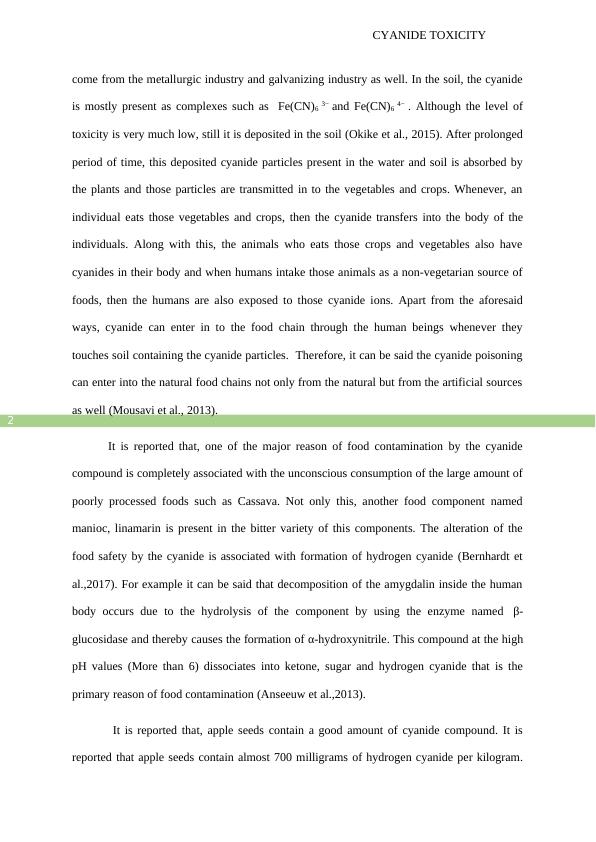Cyanide Toxicity: Causes, Effects and Prevention
This assignment focuses on cyanide toxicity, including its effects, exposure pathways, risk factors, clinical evaluation, treatment, and management. It also includes a case study of a 5-year-old who experiences hypotension and coma after regularly consuming cassava for breakfast and being exposed to smoke inhalation.
9 Pages2137 Words351 Views
Added on 2022-11-23
About This Document
This article discusses the causes, effects and prevention of cyanide toxicity. It explains how cyanide enters the food chain and how it affects the human body. The article also includes a case study of cyanide poisoning and information on the permissible limit of cyanide in drinking water.
Cyanide Toxicity: Causes, Effects and Prevention
This assignment focuses on cyanide toxicity, including its effects, exposure pathways, risk factors, clinical evaluation, treatment, and management. It also includes a case study of a 5-year-old who experiences hypotension and coma after regularly consuming cassava for breakfast and being exposed to smoke inhalation.
Added on 2022-11-23
ShareRelated Documents
End of preview
Want to access all the pages? Upload your documents or become a member.
Cyanide in Cassava: A Review
|28
|9835
|45
Mass Spectrometer Assignment | Physics Assignment
|8
|1270
|267
Biofortification of Tomato
|12
|3556
|99
Water-soluble vitamins and their main functions
|5
|850
|19
(PDF) Role of Aquatic Plants in Wastewater Treatment
|36
|8795
|104
Toxicology
|10
|2408
|280



